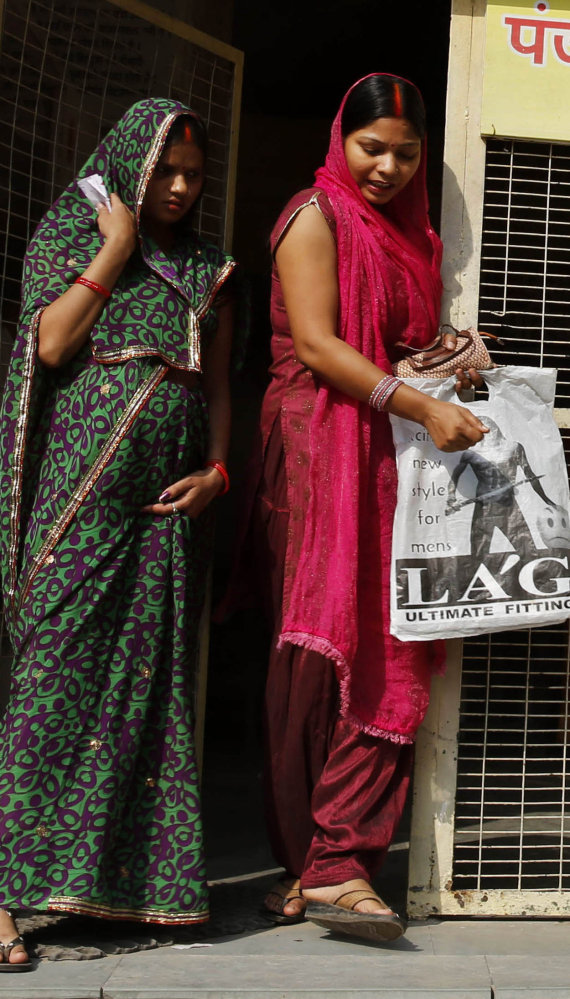NEW DELHI — It’s called sterilization season.
In rural India, doctors and public health officials aiming to meet family-planning targets set up “sterilization camps” where women arrive by the jeep-loads. They lie on makeshift operating tables while doctors quickly slice open their bellies, insert a laparoscope and tie their fallopian tubes. There are quotas to meet.
The women – who have been enticed by a payment of a few rupees, a free sari or pots and pans – often writhe on the floor in pain after the procedure, and are sent back to their villages with a handful of painkillers and little follow-up care.
Last week, what some activists have criticized as a barbaric system of population control went wrong at an abandoned hospital in the town of Bilaspur in the central Indian state of Chhattisgarh.
There, at least 60 women became sick after botched procedures Saturday at a free mass sterilization camp set up by the district health department. Twelve ultimately died and at least 30 others are in critical condition, state officials said. Four doctors have been suspended and an investigation is underway. Officials said Wednesday that the surgeon performed 83 sterilizations in a little more than five hours, far more than the number recommended by guidelines.
‘LUCKY TO BE ALIVE’
Women who survived the bungled procedures said they felt lucky to be alive and were bewildered by what happened.
Deepa Yadav, 22, who has two children, went to the camp with a relative Saturday for her operation and became ill a few hours later. She received 1,400 rupees, or about $22, to undergo the procedure.
Sterilization is by far the most common method of family planning in India, government records show, with 37 percent of married women sterilized, according to the country’s National Family Health Survey. Although the national government says it no longer sets targets for the number of women sterilized, unofficial goals still exist, said Avina Sarna, the director of Population Council of India. Mihir Banerjee, vice president of People for Better Treatment, an organization fighting medical negligence in India, said such camps prey on illiterate, low-income women who have no recourse when procedures go wrong.
DIFFICULT POLITICAL HISTORY
“They conduct surgeries en masse in the most horrible conditions without caring for the safety of the patients,” Banerjee said.
This common birth control method has a difficult political history in India. The Indian government first began family planning initiatives in the 1950s. But forced sterilization for men to control a population boom in the 1970s – launched by Indira Gandhi’s government – led to a nasty backlash.
That troubled period set back government family planning efforts for decades. It re-emerged later as “family welfare” – with the government health ministry offering an array of birth control options.
The efforts have lowered the fertility rate to 2.4 children in 2011, from 3.6 in 1996, government statistics say. Yet more work is needed to stabilize population growth in a country of more than 1.2 billion that still adds 16 million people a year, according to the U.N. Population Fund.
Many health and women’s activists have long criticized the government’s over-emphasis on sterilization, saying it is a lazy way out of the labor-intensive work of sending counselors to villages to educate people or regularly handing out birth-control pills and condoms.
Send questions/comments to the editors.



Success. Please wait for the page to reload. If the page does not reload within 5 seconds, please refresh the page.
Enter your email and password to access comments.
Hi, to comment on stories you must . This profile is in addition to your subscription and website login.
Already have a commenting profile? .
Invalid username/password.
Please check your email to confirm and complete your registration.
Only subscribers are eligible to post comments. Please subscribe or login first for digital access. Here’s why.
Use the form below to reset your password. When you've submitted your account email, we will send an email with a reset code.